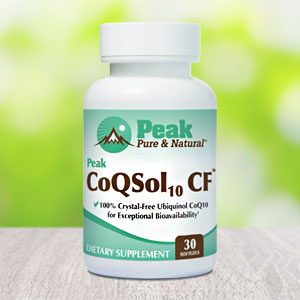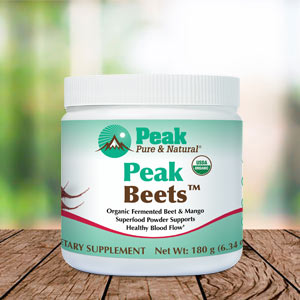Get Easy Health Digest™ in your inbox and don’t miss a thing when you subscribe today. Plus, get the free bonus report, Mother Nature’s Tips, Tricks and Remedies for Cholesterol, Blood Pressure & Blood Sugar as my way of saying welcome to the community!
The vegetable that lowered blood pressure 36 percent

When it comes to high blood pressure, diet can make or break you.
Consuming too much salt (or not enough, surprisingly) can raise your blood pressure, as can drinking too much alcohol or caffeine or eating too little prebiotic fiber. Trans and saturated fats also aren’t good for your blood pressure.
So what foods should you eat instead?
There’s one food in particular that’s caught the attention of investigators due to its combination of heart-healthy nutrients that lowered blood pressure 36 percent in some people…
Tomatoes can take high blood pressure down
Researchers in Spain studied more than 7,000 adults between the ages of 55 and 80 over the course of three years.
Just over 82 percent of the participants had high blood pressure at the beginning of the study, but all of them had factors that raised their risk for heart problems. Some of these factors include diabetes, smoking, high cholesterol, obesity and/or a family history of early-onset cardiovascular disease.
The American Heart Association (AHA) defines normal blood pressure as a reading of less than 120 systolic (the top number) and less than 80 diastolic (the bottom number). The researchers divided the participants with high blood pressure into three categories of hypertension:
- Grade 1 hypertension, systolic 140 to 159 mmHg and diastolic 90 to 99 mmHg
- Grade 2 hypertension, systolic 160 to 179 mmHg and diastolic 100 to 109 mmHg
- Grade 3 hypertension, systolic 180 mmHg or higher and diastolic 110 mmHg or higher
During the study, participants completed questionnaires about their diet and physical activity. The researchers paid particular attention to the amount of tomato products participants were consuming. They tracked daily consumption of raw tomato and tomato-based items like tomato sauce and the cold Spanish tomato soup known as gazpacho.
The researchers separated individuals into four groups based on daily tomato consumption, with the lowest group ingesting 1.5 ounces or less of tomato and the higher group eating 4 ounces or more.
Based on the results, the researchers found that eating the equivalent of one large 4-ounce tomato each day could slash the risk of high blood pressure by as much as 36 percent.
Additionally, those eating a medium amount of tomatoes also showed a significant drop in diastolic blood pressure compared with those consuming the lowest amount.
Interestingly, the reductions in systolic and diastolic blood pressure were only significant in those with grade 1 hypertension and not in the groups with higher blood pressure levels. The researchers attributed that to the elderly nature of the study population, most of whom had long-standing hypertension at the start of the study, as well as high cardiovascular risk factors.
“Tomato is one of the most consumed, widely available, and affordable vegetables worldwide, and it is an important component of the best diets, such as the Mediterranean diet,” writes study co-author Dr. Rosa Maria Lamuela-Raventós, a professor at the University of Barcelona. “Tomato consumption may play a favorable clinical role in the prevention and management of elevated blood pressure.”
The magic ingredients: lycopene and potassium
The study authors speculate that the tomato’s impact on blood pressure is likely due to specific minerals like potassium and compounds such as lycopene that have antioxidant and anti-inflammatory effects. Potassium’s effect on artery health and blood pressure is well-established, and at least one study has shown a link between lycopene and lower systolic blood pressure. The AHA already recommends tomatoes due to their combination of these nutrients.
There are limits to the study, including its observational nature and the fact that much of the data is self-reported. Further studies are needed to confirm these results.
Still, you may want to consider adding a daily dose of tomatoes to an already healthy diet rich in whole grains, fresh fruits and vegetables. Like Lamuela-Raventós mentioned, the Mediterranean diet includes all these foods, especially tomatoes, so you may want to give that eating plan a try.
There is one thing you should bear in mind…
If you add tomato-based products like canned tomatoes, sauces or soups to your diet, make sure they’re low in sodium — or better yet, sodium-free.
And in case you’ve gotten hung up on whether tomatoes are a fruit or a vegetable, let me share this: According to the editors of the Encyclopedia Britannica, nutritionists consider tomatoes to be vegetables.
Editor’s note: There are perfectly safe and natural ways to decrease your risk of blood clots including the 25-cent vitamin, the nutrient that acts as a natural blood thinner and the powerful herb that helps clear plaque. To discover these and other secrets of long-lived hearts, click here for Hushed Up Natural Heart Cures and Common Misconceptions of Popular Heart Treatments!
Sources:
Eating More Tomatoes May Help Lower Blood Pressure — Everyday Health
Association between tomato consumption and blood pressure in an older population at high cardiovascular risk: observational analysis of PREDIMED trial — European Journal of Preventive Cardiology
11 Foods That Increase Blood Pressure — Durham Nephrology Associates, PA
Lycopene Supplementation and Blood Pressure: Systematic review and meta-analyses of randomized trials — Journal of Herbal Medicine
How Potassium Can Help Control High Blood Pressure — American Heart Association














